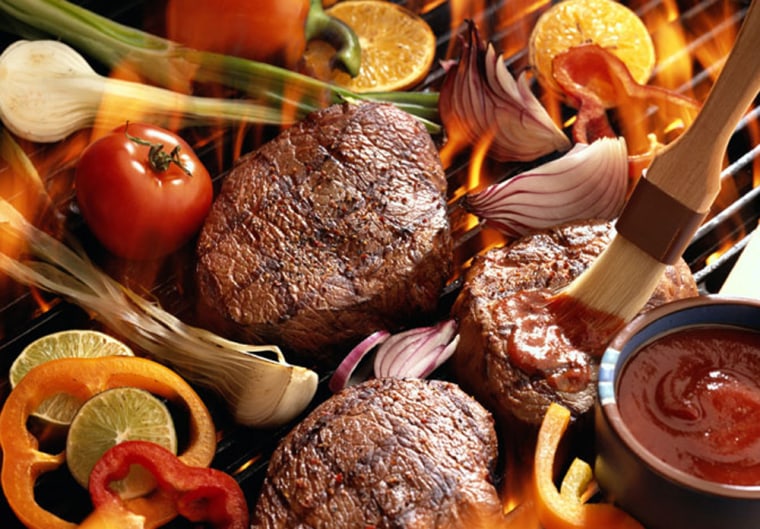Many Americans still do not know that grilling can be unhealthy. The cancer risk from grilling, however, is real, but it changes dramatically with what you grill and how you do it.
The problem with traditional grilling comes from the combination of meat with intense heat. Whether you are using red meat, poultry or seafood, substances in the muscle proteins of these foods react under high heat to form carcinogenic compounds called heterocyclic amines (HCAs). HCAs can damage the DNA of our genes, beginning the process of cancer development.
Consumption of HCAs is mostly clearly linked to cancers of the colon and stomach. One study found that people who eat the most barbecued red meat (beef, pork and lamb) almost doubled their risk of colon polyps, compared to those who did not eat these foods. Colon polyps can develop into colon cancer. Some evidence also suggests that these carcinogenic compounds can travel through the bloodstream to other tissues. This would explain why HCAs could be a factor in breast cancer and other cancers.
Cook at lower temperatures
A simple way to decrease formation of carcinogenic HCAs is to cook your meat at lower temperatures, like roasting it in the oven and stewing it. If you still want to grill, turn the gas down or wait for charcoal to become low-burning embers. By raising the grilling surface from the heat source, you can also reduce black char that can form on meat. This char has a high carcinogen content.
Pan-frying is another method of cooking that you should do at a lower temperature. Research shows that frying meat at a higher pan temperature, which saves only two minutes of cooking time, produces three times the HCA content of meat cooked at medium temperatures.
Two more ways to reduce HCAs when grilling are flipping meat every minute and marinating. Marinating can decrease HCA formation by up to 96 percent, although studies are still underway to determine which ingredients help the most.
To avoid a different class of cancer-causing compounds called polycyclic aromatic hydrocarbons (PAHs), grill leaner meat cuts that will drip less and cause fewer flare-ups and smoke. PAHs form in smoke and are deposited on the outside of meat.
Although it is a good idea to use an instant-read thermometer to be sure meat is thoroughly cooked, the further you cook meat past that point, the more HCAs will form. A higher consumption of well-done meat is linked with two to five times more colon cancer and two to three times more breast cancer. Risk of cancers of the stomach, pancreas and prostate may also increase.
Try fish, chicken or veggies
Since the American Institute for Cancer Research recommends limiting all red meat to no more than three ounces a day, another way to reduce your cancer risk when grilling is to change what you grill. Fish and marinated skinless chicken are both great on the grill, although HCAs can still form on them. If you still want to eat red meat, make kabobs. The small pieces of meat cook quickly, and you can add lots of vegetables.
The best choice for grilling, however, is vegetables and fruits, because they don’t form HCAs. These foods also supply a whole range of cancer-fighting nutrients and phytochemicals. In fact, the natural phytochemicals in vegetables stimulate enzymes that can convert HCAs to an inactive, stable form that is easily eliminated from the body.
Even during barbecue season, your health will benefit by following AICR’s model of healthy eating called the New American Plate that makes vegetables, fruits, whole grains and beans the centerpieces of the meal.
